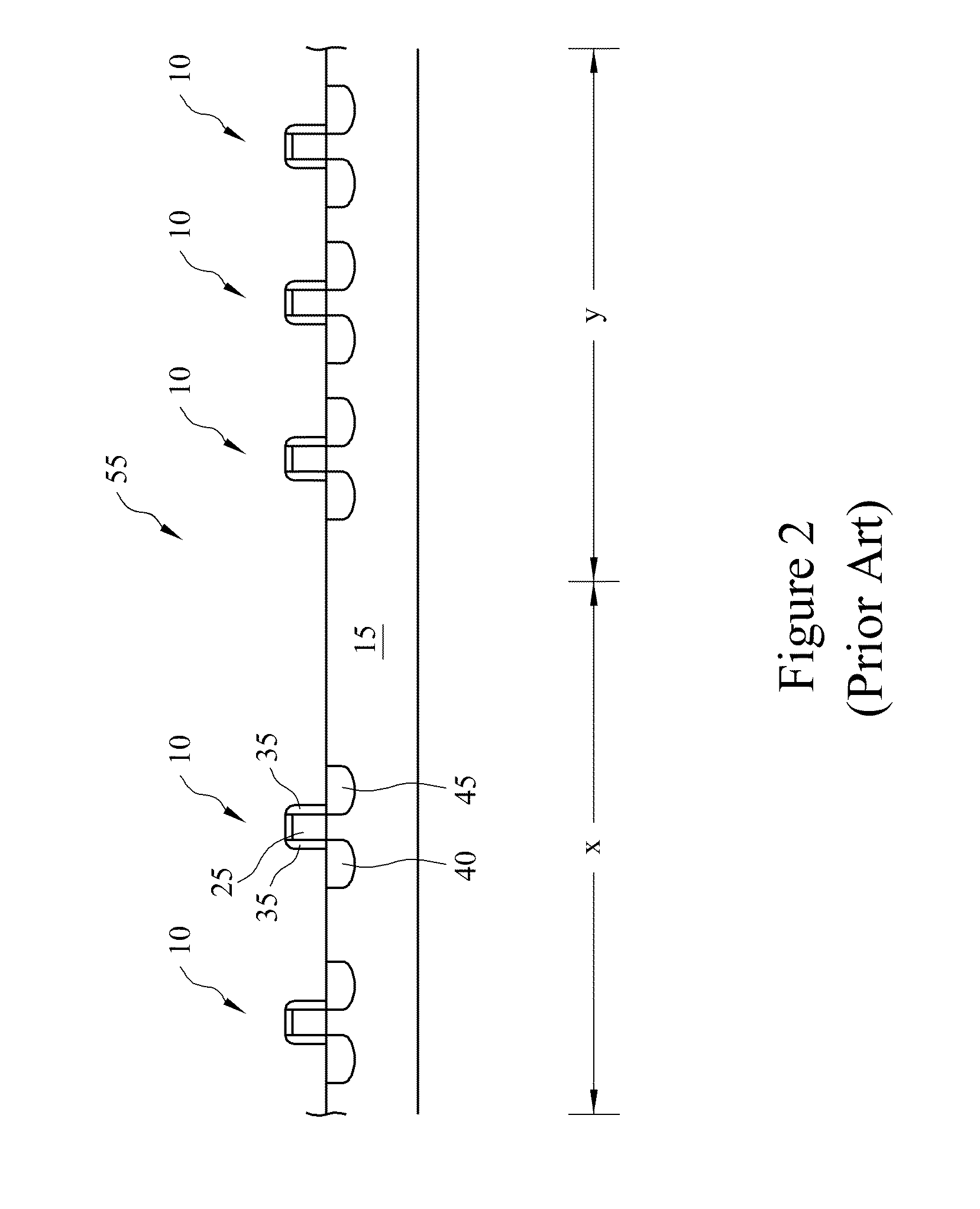Method of manufacturing strained-silicon semiconductor device
a technology of strained silicon and semiconductors, applied in the direction of individual semiconductor device testing, semiconductor/solid-state device testing/measurement, instruments, etc., can solve the problems of lack of planarity when seg is performed, small components are now so small, etc., and achieve the effect of increasing the local epitaxial concentration ratio percentag
- Summary
- Abstract
- Description
- Claims
- Application Information
AI Technical Summary
Benefits of technology
Problems solved by technology
Method used
Image
Examples
Embodiment Construction
[0030]The making and using of the presently preferred embodiments are discussed in detail below. It should be appreciated, however, that the present invention provides many applicable inventive concepts that can be embodied in a wide variety of specific contexts. The specific embodiments discussed are merely illustrative of specific ways to make and use the invention, and do not limit the scope of the invention. The present invention will be described with respect to preferred embodiments in a specific context, namely a semiconductor device consisting of a substrate populated with a plurality of substantially identical transistors. The invention may also be applied, however, to other semiconductor devices as well.
[0031]The present invention involves a method of manufacturing semiconductor devices. Specifically, the present invention is directed at a method of implementing selective epitaxial growth (SEG) with reduced local-loading effects in order to produce a more uniform epitaxial...
PUM
 Login to View More
Login to View More Abstract
Description
Claims
Application Information
 Login to View More
Login to View More - R&D
- Intellectual Property
- Life Sciences
- Materials
- Tech Scout
- Unparalleled Data Quality
- Higher Quality Content
- 60% Fewer Hallucinations
Browse by: Latest US Patents, China's latest patents, Technical Efficacy Thesaurus, Application Domain, Technology Topic, Popular Technical Reports.
© 2025 PatSnap. All rights reserved.Legal|Privacy policy|Modern Slavery Act Transparency Statement|Sitemap|About US| Contact US: help@patsnap.com



